The Third Eye. Brought to you by Lithic Literature.
The Third eye.
Brought to you by Lithic Literature
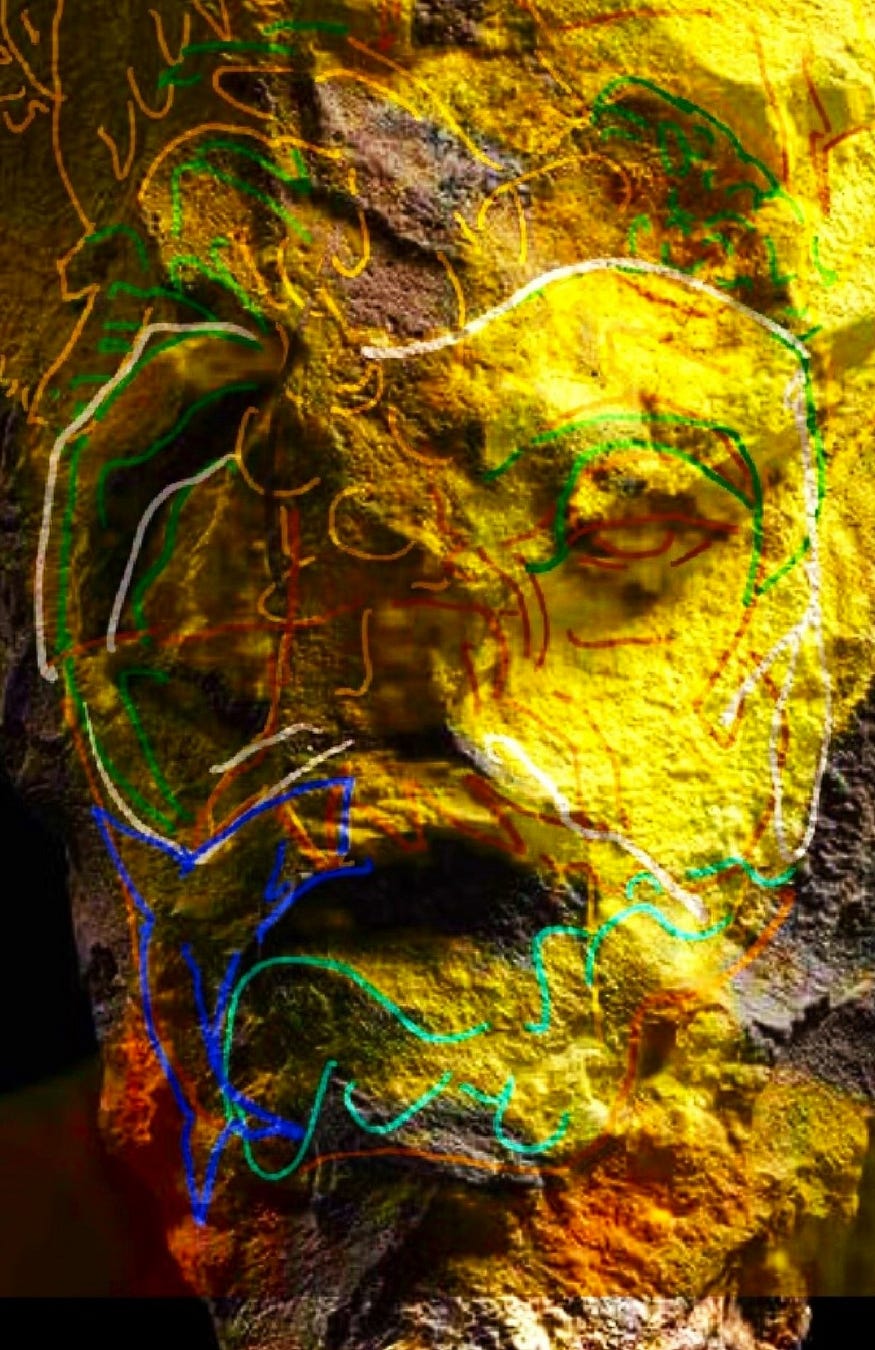

When looking at Lithic Literature and how it was created by ancient humans, it begins to emerge as a pattern that is reused. A pattern that can be scaled up or down using the human body, thumb, hand, or foot. With that in mind, we can imagine that you would not need to carry a large monument around since you can scale down to a pocket size template. I could carry my template in my pocket to any desired site and start working by scaling my design to fit on mountains, or scale down to a lovely amulet to wear around my neck. This idea of scaling a design up and down can be found with the symbol of the crucifix. With little effort one can find a crucifix on the wall, necklace, earrings, rings, or very large. The broken bust of the pharaoh that was found with Nefertiti is such a template. As was pointed out in a previous article, the broken bust was repaired, yet to some it still looked broken. It does not have the same function as the Nefertiti bust. It was never meant to be a simple portrait with a likeness, instead it is a historical document, or to put more simply it is a picture book. The link below can bring you to more on the “unbroken” bust.
Below I have included a couple of colossal sculptures of the same era. The larger pieces have the same odd presentation of appearing to be broken even after repairs. As in the “unbroken” bust, they are a historical documents providing information of Egypt’s Ancient past. I will definitely return to the colossal sculptures, in the mean time, I will focus on the broken bust found with the bust of Nefertiti.
This is an observational study of the design offered by the bust and how it overlaps with older material. In this observational study, I am taking the view that pareidolia is not a game for children observing clouds passing and instead a gift from our most ancient ancestors. So please relax and enjoy the show.

I have chosen a 1.2 million year old artifact from Tanzania for this analysis, but being from Maine, I am starting our stone adventures from here. I have included a blade from Maine in the image below. I have already highlighted some of the surface action. I am a printmaker of the old school of intaglio, working with the zinc plate surface. I feel comfortable stating I have trained eye to study the surfaces and the human mark.
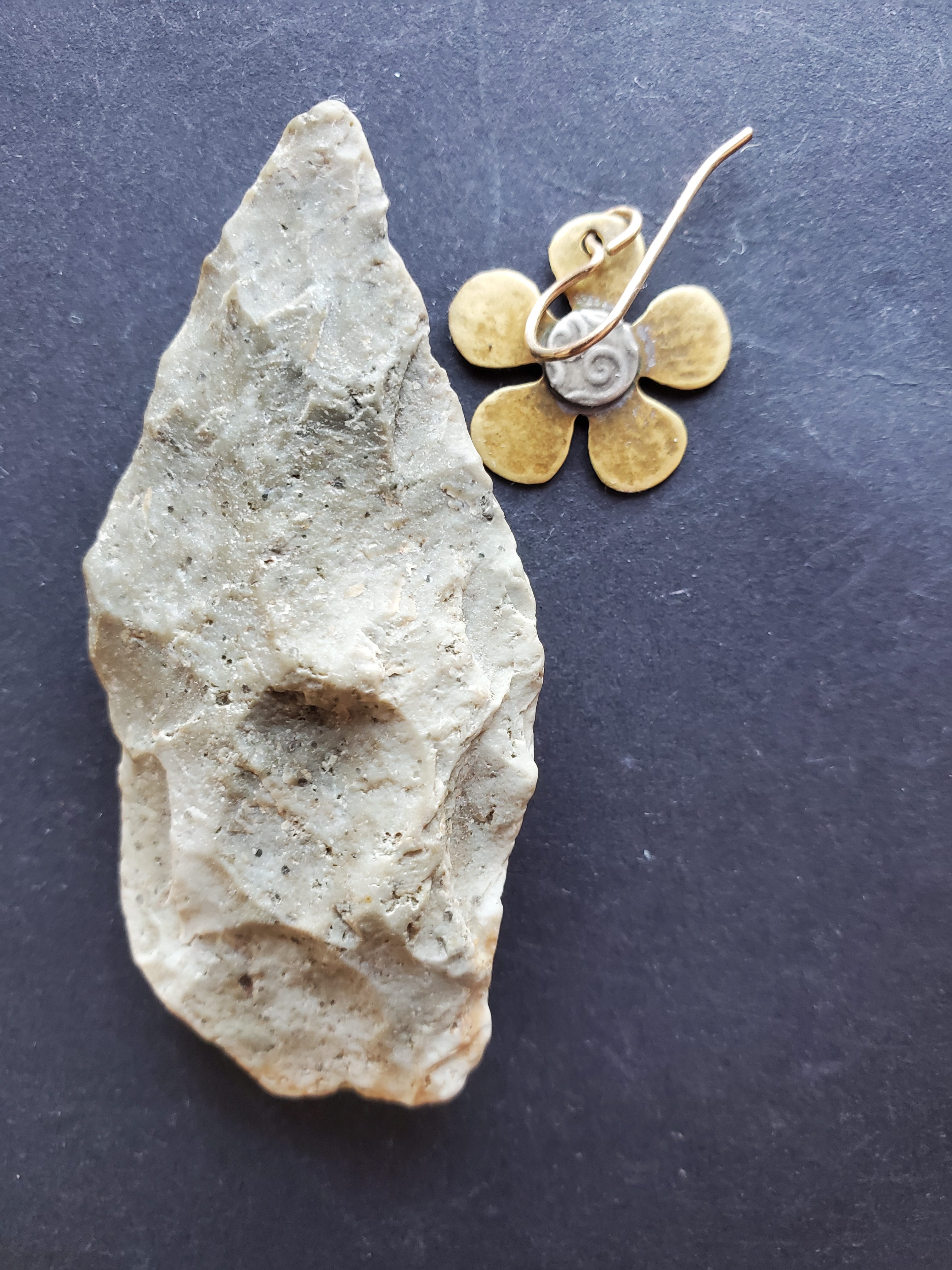

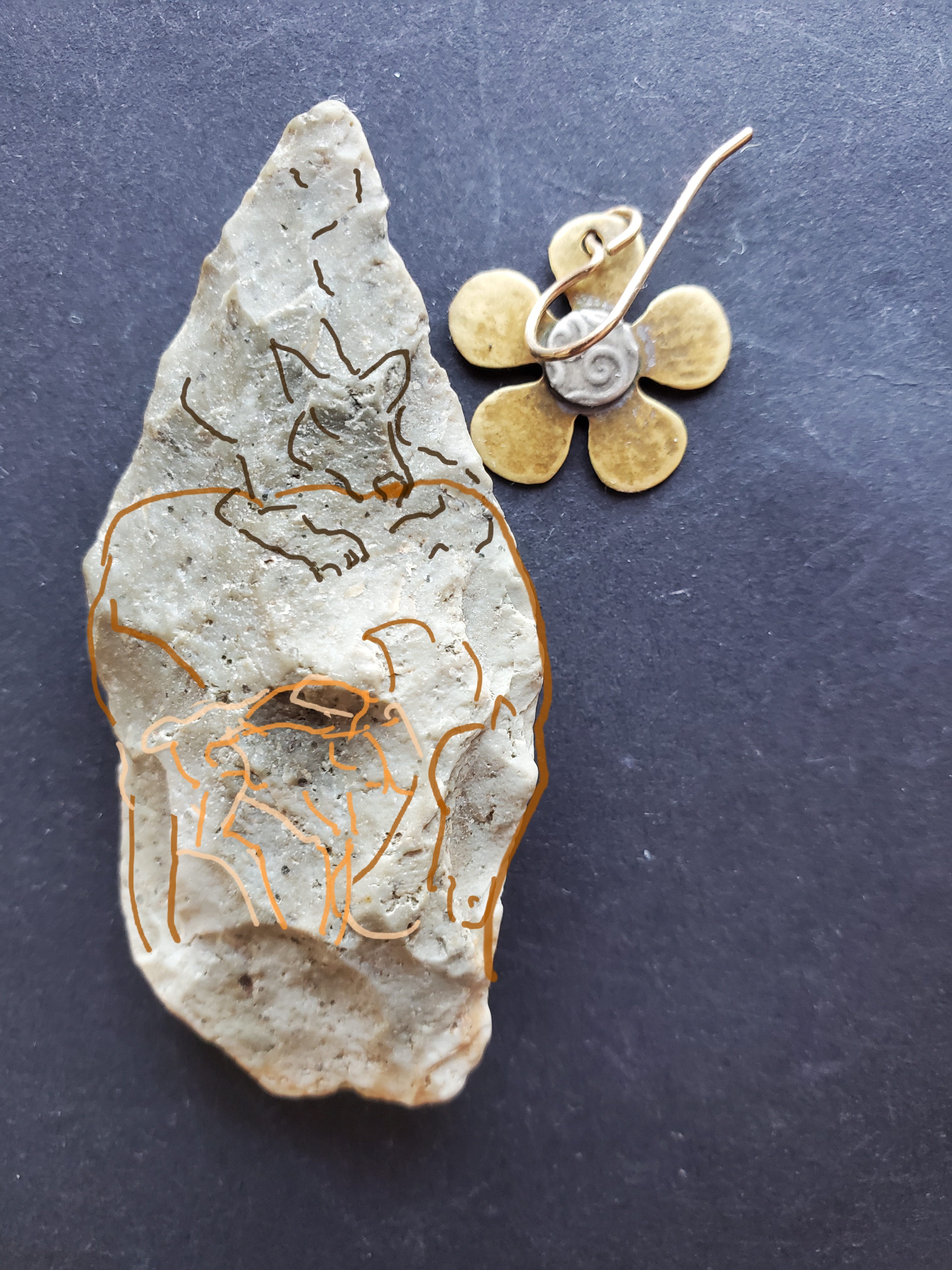
Okay, now that we have the highlighted blade from Maine how does it compare with the 1.2 year old blade from Tanzania? Below, I have highlighted the quadrupeds and it’s predator, and I find the pattern consistent. I am not saying that both blades are of the same time, I am suggesting that both craftsmen were employing the same ancient design developed by our ancestors to record their lives and history. Another characteristic of Lithic Literature is that the design can be approached from different orientations. There is no upright position and the stories present themselves as the viewer makes their way around the artifact.
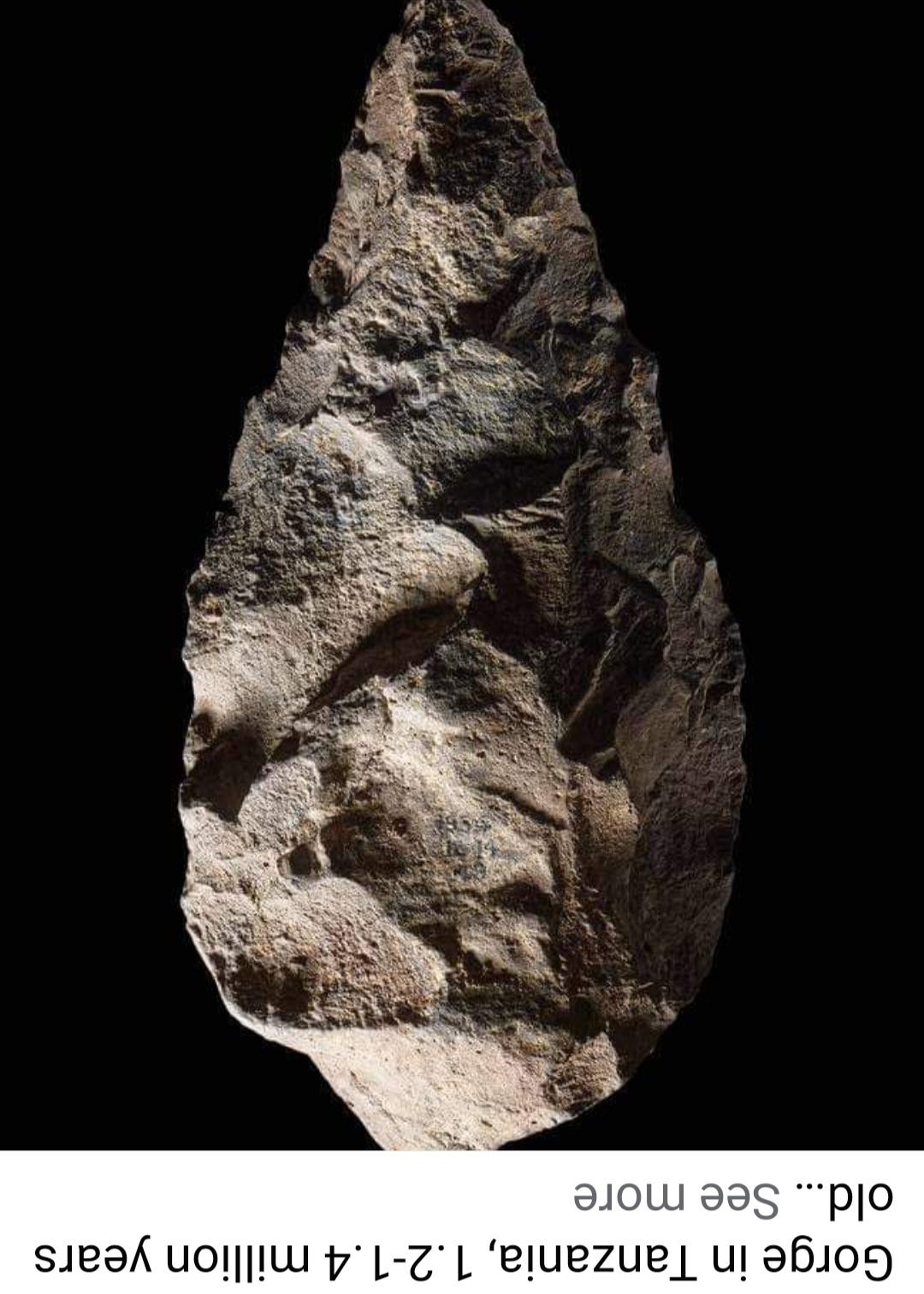
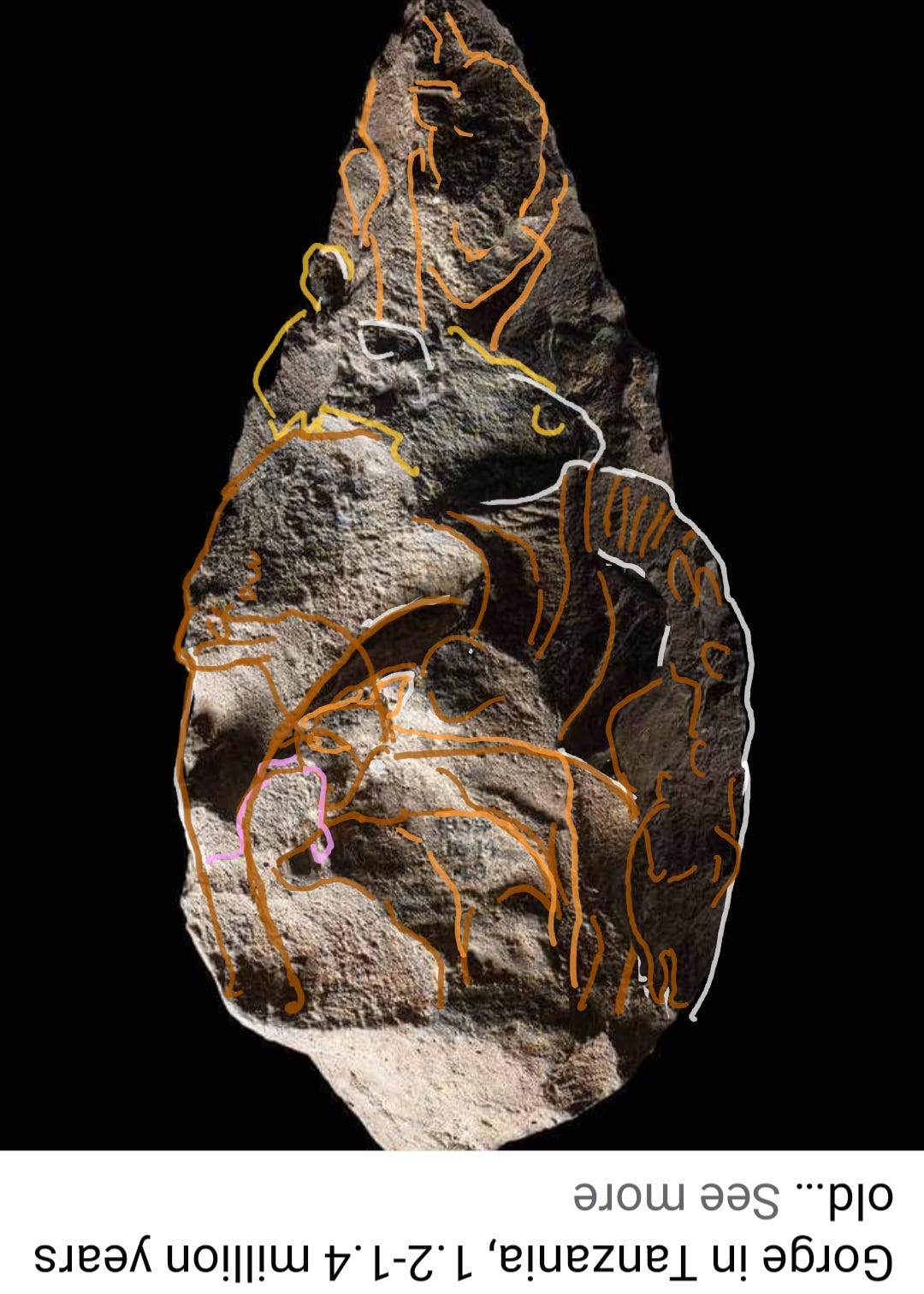


I feel comfortable to say that the design, which I refer to as Lithic Literature, is present in both artifacts. Lithic Literature is a layered affair and the quadruped’s lifecycle and its predators is one of the many layers. Please feel free to explore other layers with their subjects and see if they are offered on both artifacts. There are subjects that include human activity as well. At this time we are leaving Maine behind and taking our Tanzanian blade to Egypt to see if the template has any consistencies with the broken bust. As I pointed out earlier, the bust is not as broken as is believed.

I am working with the Adobe Illustrator program that allows me to create images as transparencies. It also allows me to overlay the transparency over another image to observe overlaps. I have included a few lines in the design that allows me to stay centered as I look for the consistencies.
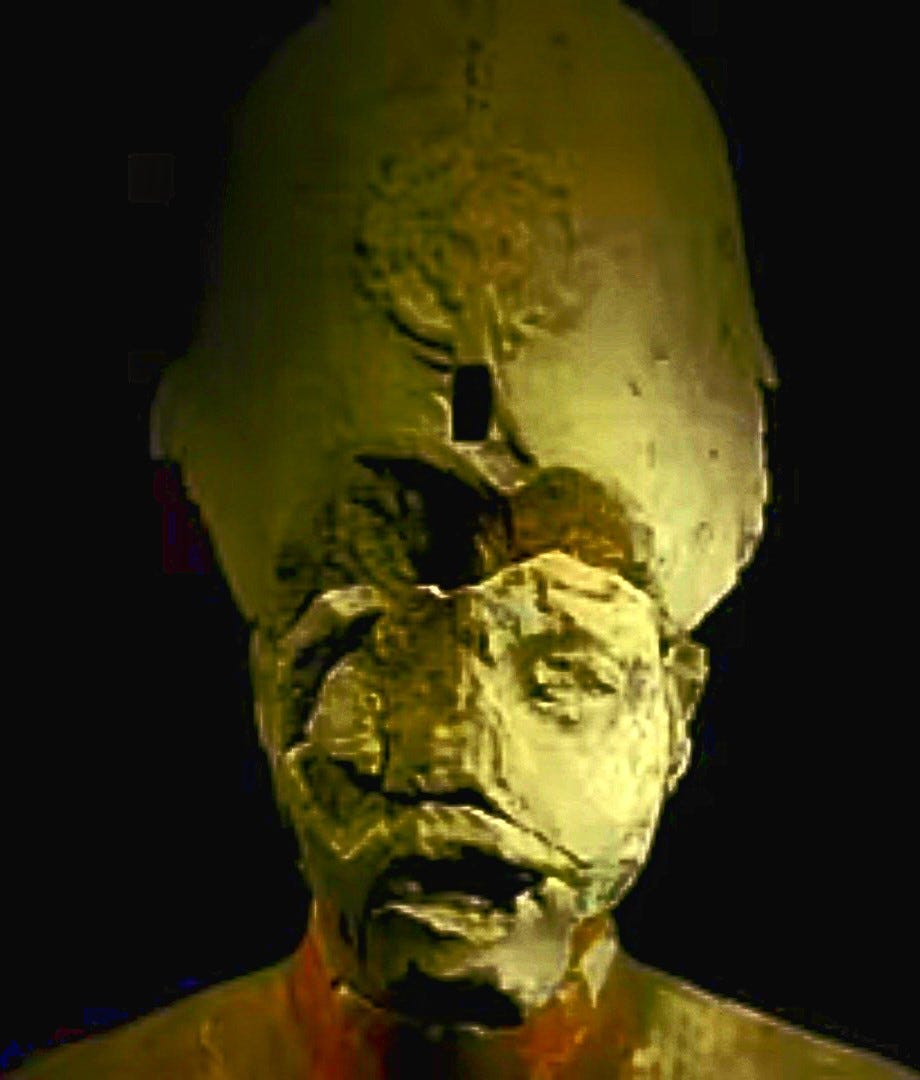

In the bust there is a reference to a palm/coconut tree. the references to a flood are also present. The palms of the tree work like pages in a book and have a chronological aspect to them. I believe it carries different eras of humankind. I am using the template of the palm to guide me and have highlighted it as I overlay it’s transparency over the Tanzanian blade. I have included below some of the other highlights. Sometimes the discoveries pop up in real time as I write and highlight. Feel confident to find more on your own and share.


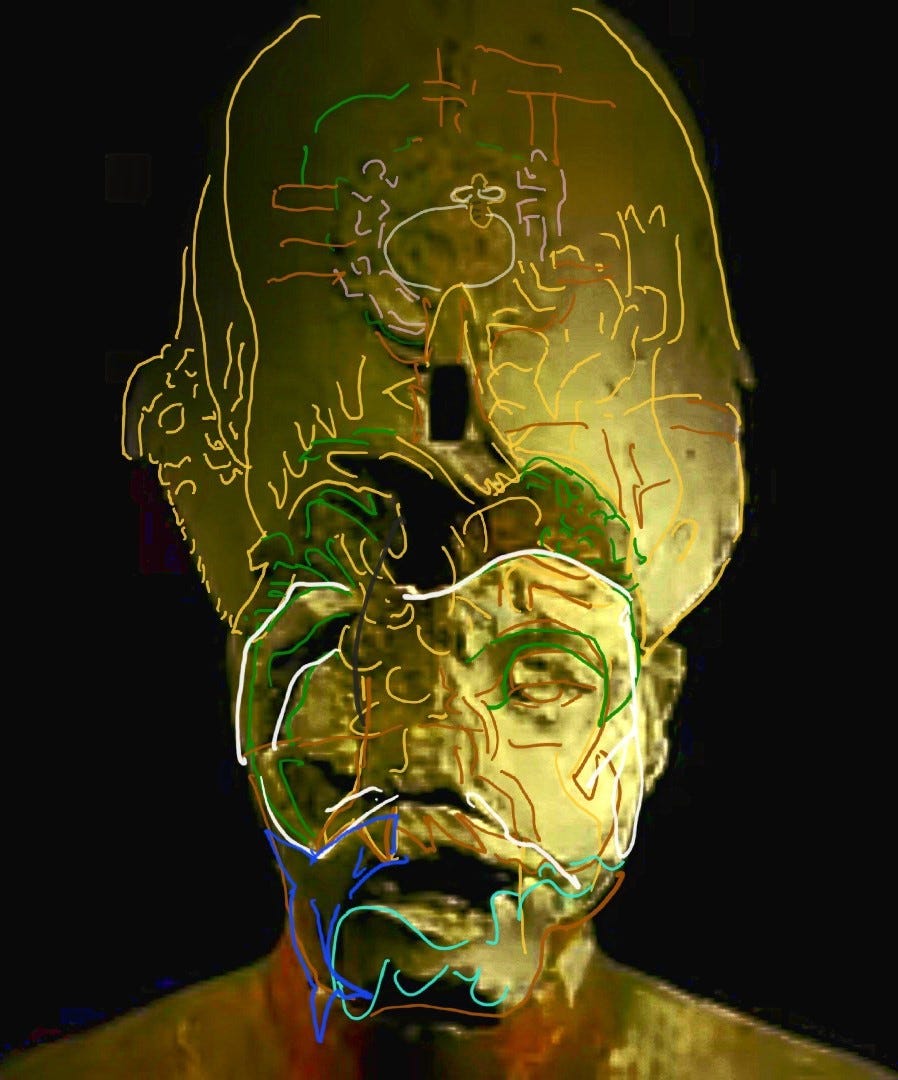
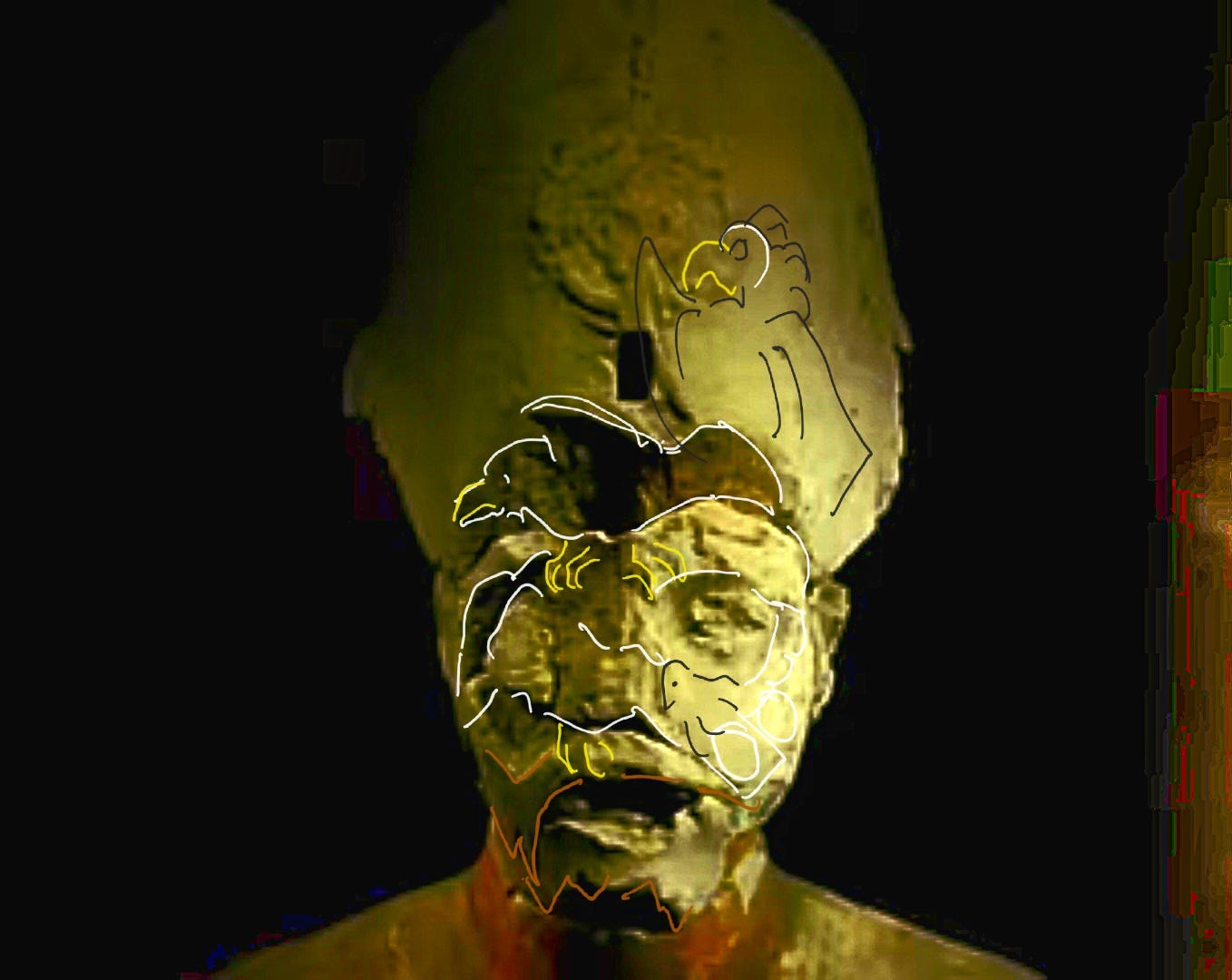
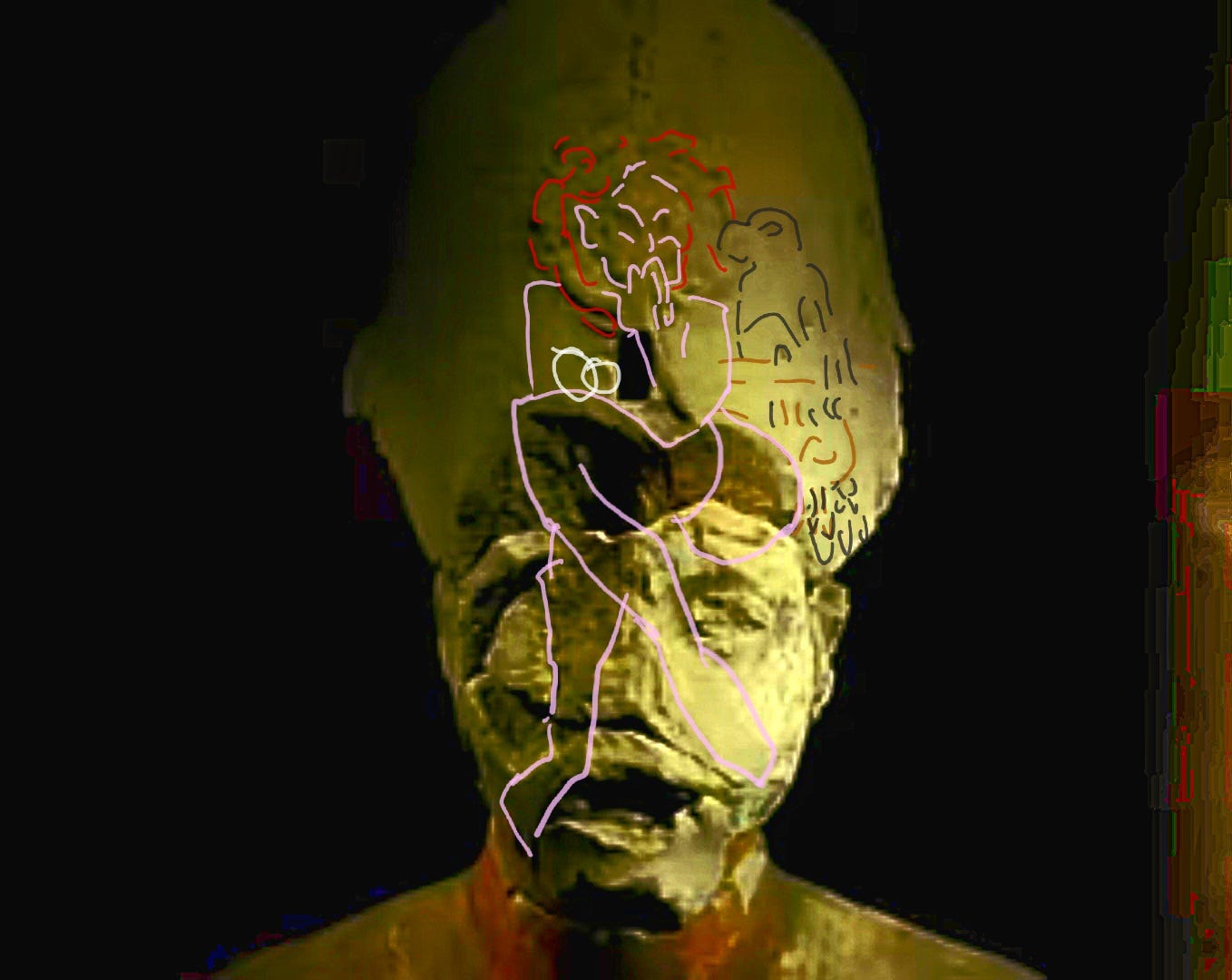


With the Adobe Illustrator I was able to create the transparency with the highlighted image of the bust. As I mentioned the idea of a flood is introduced with the danger of sharks. please note the shark highlighted on the lower right jaw of the bust. This is just one, there are sharks circling the palm with a closer look, if you dare 😲. The overlay fits like a glove. Now, what about that set of eyes? One of the eyes has a lazy look! Can I use the eye to center the image? Not only can I use it as a guide, it also corresponds with the palms chronology. It also introduces different faces as it present different human facial features that correspond with lazy eye. Lets take a look as I move the transparency of the bust and line it up with the different eyes on our Tanzanian artifact. Ready? There are more than I expected. The right side of design does not have multiple faces as the left side. It may indicate that the female features on the right is one female species that interacted with different male human types over time. Lets check out the possibilities. Warning, there are a lot 😏. I am trying to present in order. I may have side stepped a couple of times but I think it is pretty steady. Here we go!


Above on the left is the initial image which I then cropped down to allow me to focus on the overlay. Please take a moment to look around. The previously noted lazy eye comes to life here. I would even say it looks rather juicy. I have cropped a little tighter to check the action in the design. The right side of the design has a female quality to it as it leans in to kiss the male half of the design on the left side. If not a kiss she could be also transferring sustenance. The palms work well and allow me to align and center the design as I work. notice the darker half the design appears to have stacked totem of male faces starting at the bottom of the the point of the blade.
Now I will download the rest of the images below. Please feel free to browse. I am not going to comment on all of them at this time.


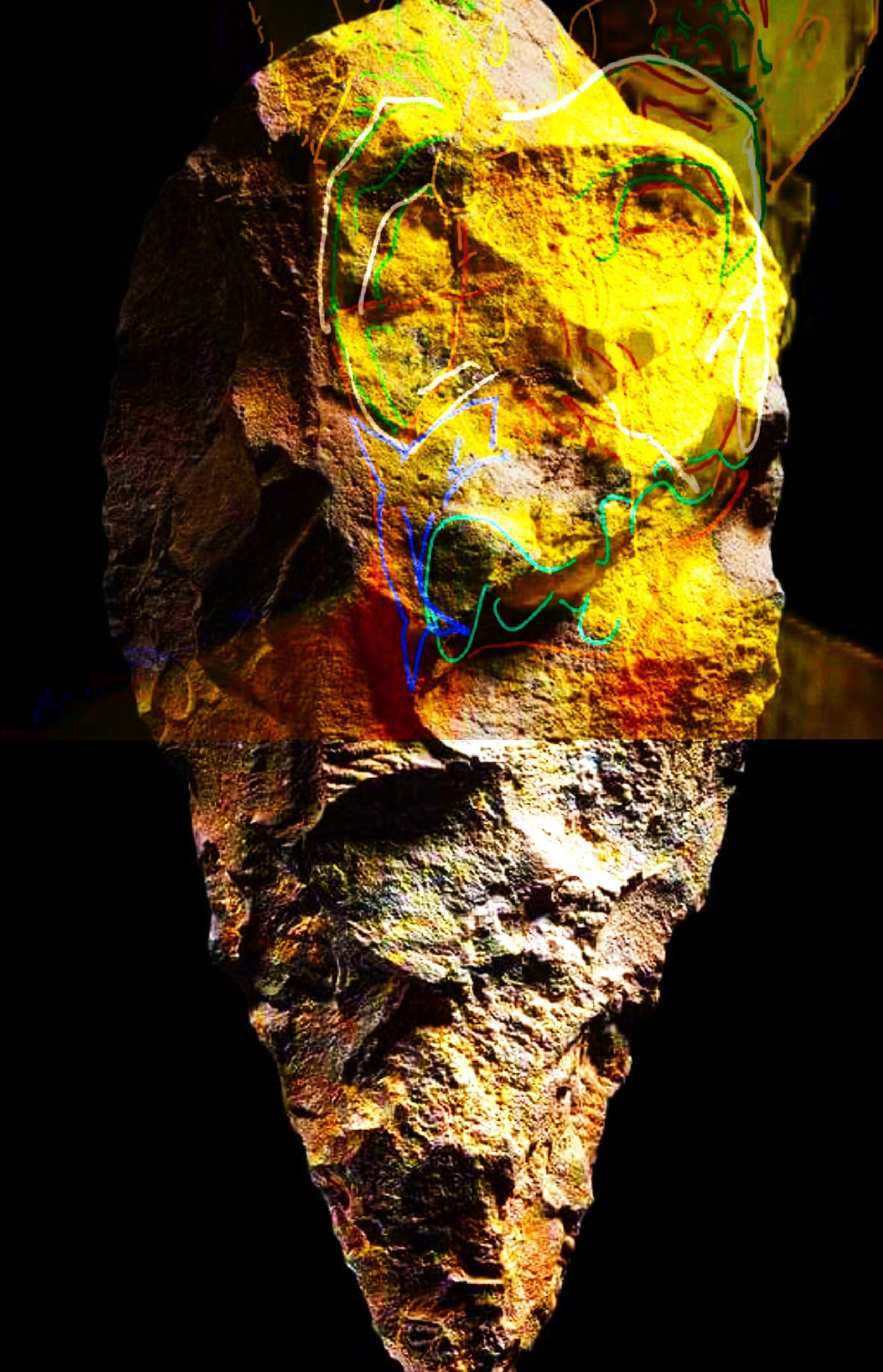


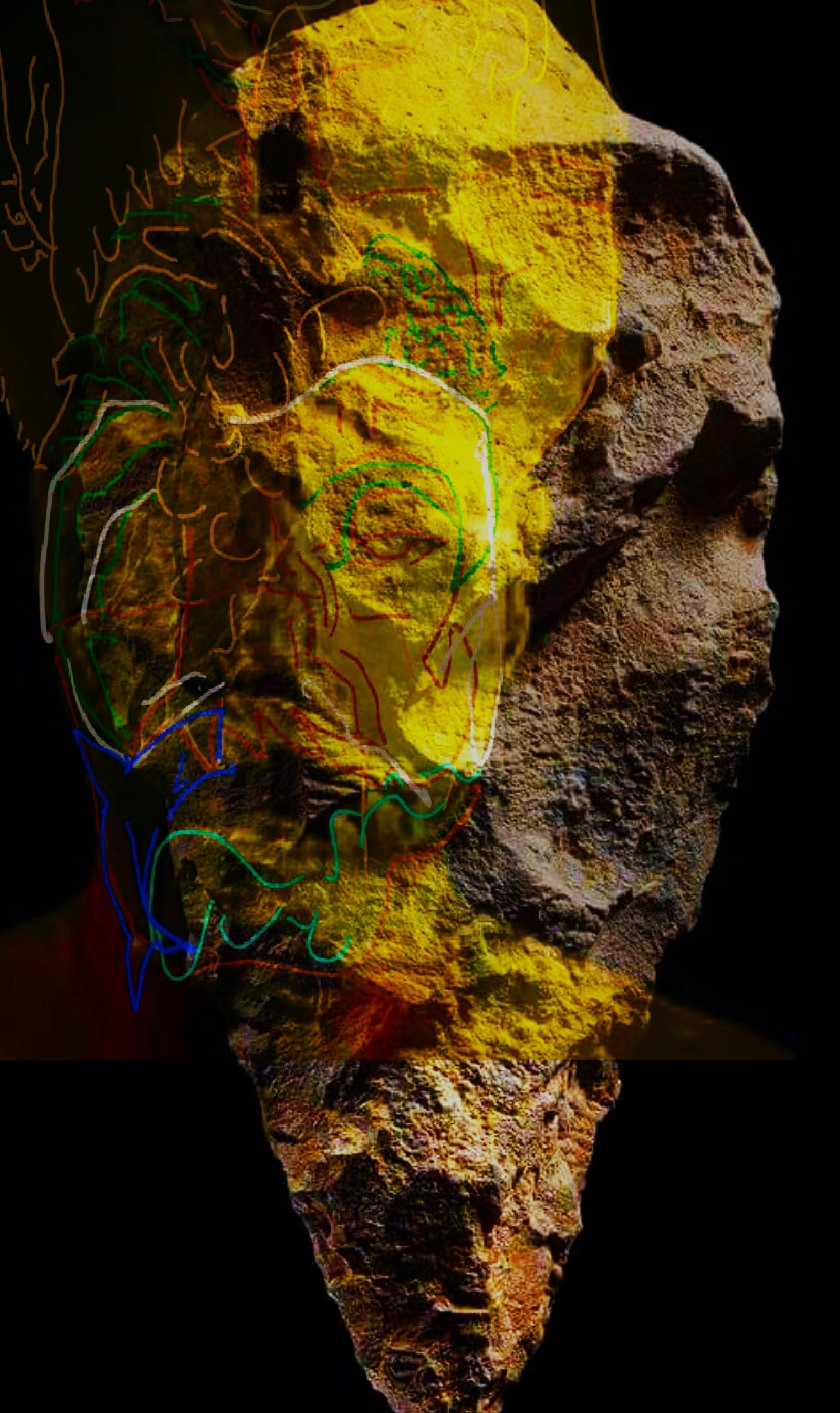



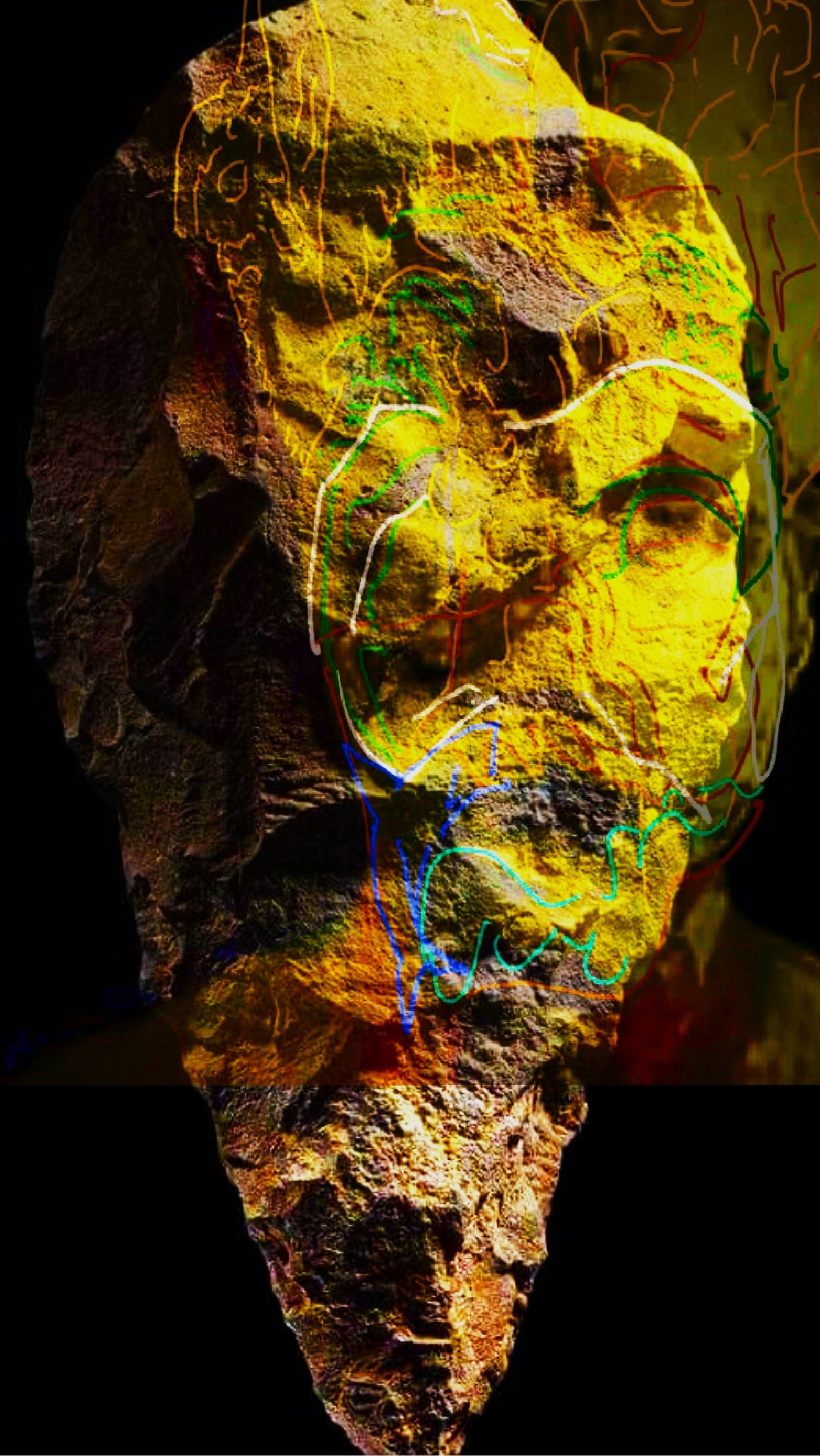
There are more than ten! Remember this is an archaeological study and we are going layer by layer as if we were on a dig, but instead we are documenting the layers in the design. Looking for any sign of chronology is an archeologist dream. Am I dreaming? NO, this is real. I am focusing on the lazy eye but you can also follow the dark faces on the left by employing his open mouth as the female on the right leans in for a kiss or maybe give sustenance . You will have more success in picking up the information by doing the same. The eyes have it.😉. So let’s get on with the show. I believe the template works, and was used by early humans. We are telling more than story here, we also documenting layers in order to compare with in the future.

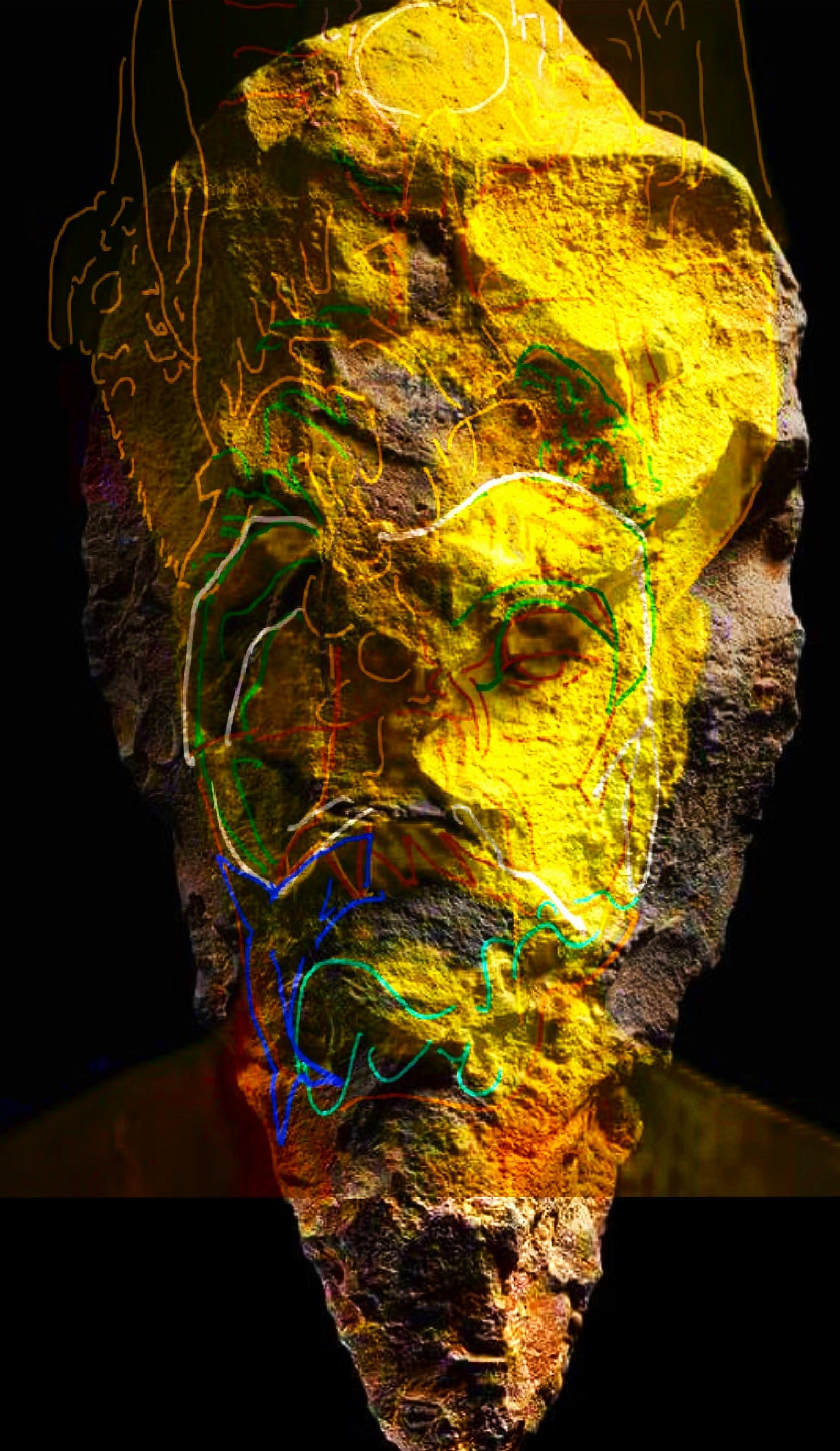








I have a few more.



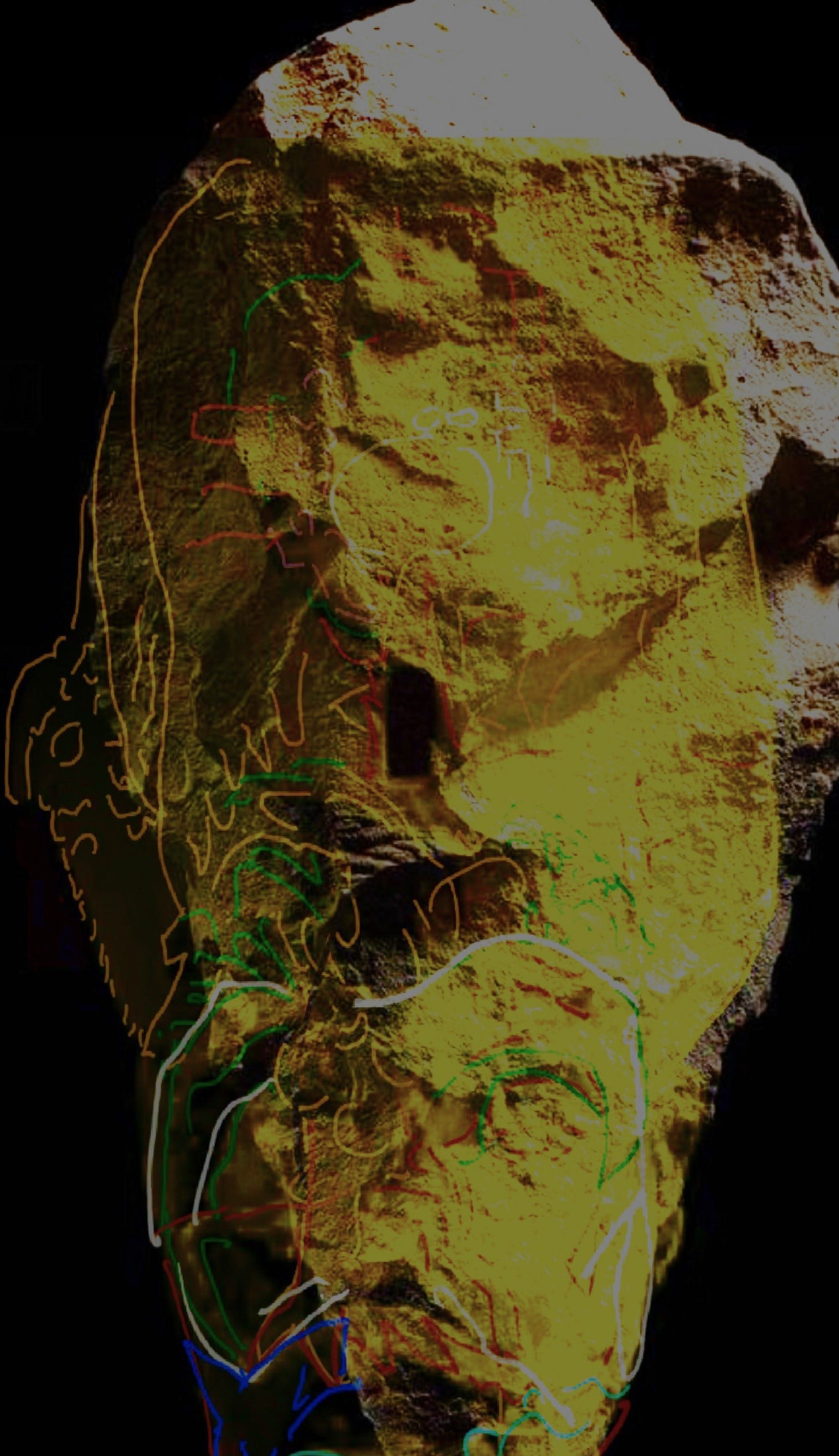



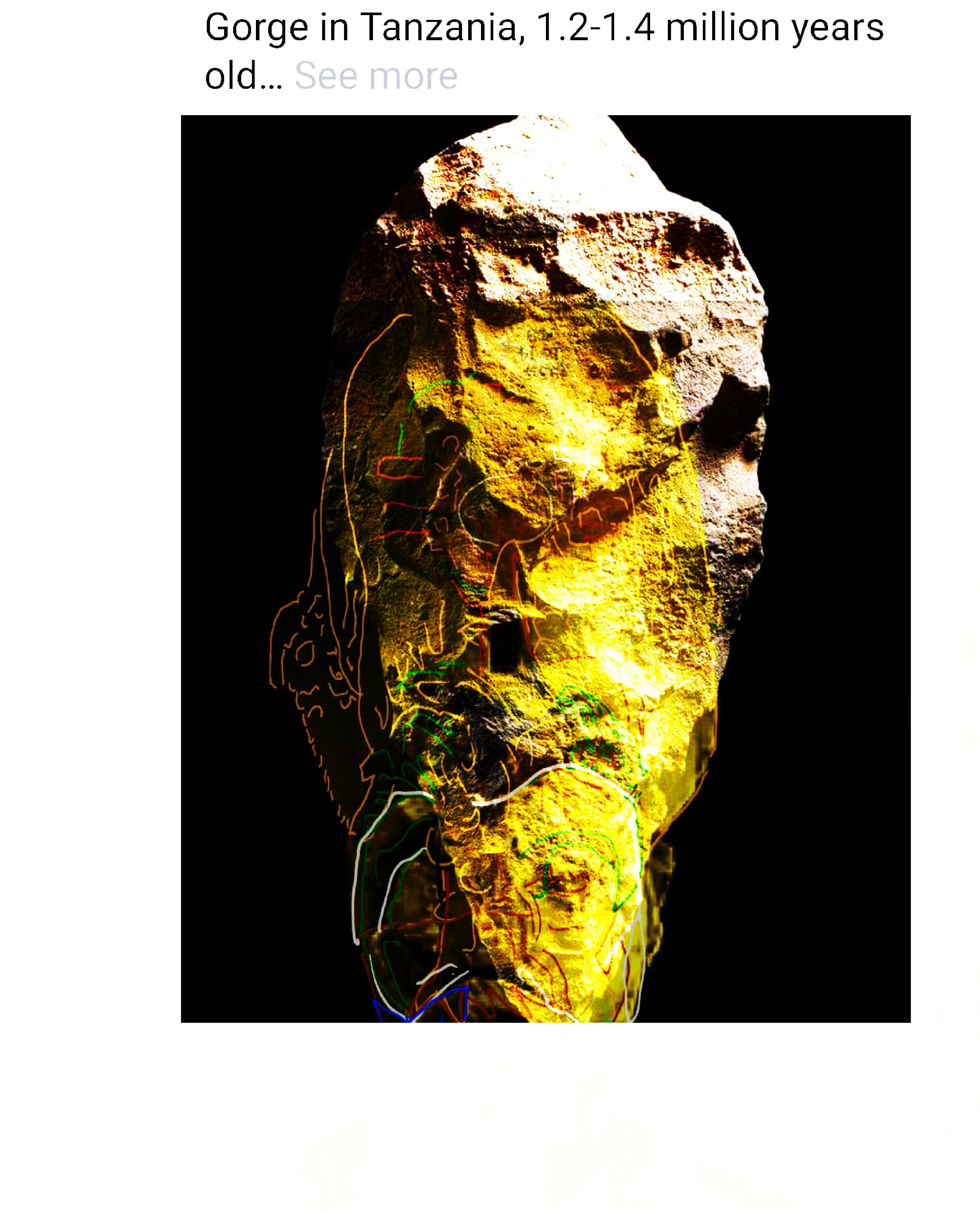








Please feel free to look. If you see something interesting please note and share. I have included a few links to my previous blogs to provide more insight and understanding.
https://karolabryant.medium.com/the-batman-story-in-the-stones-56962837bff3
Thank you again for looking.


Comments
Post a Comment